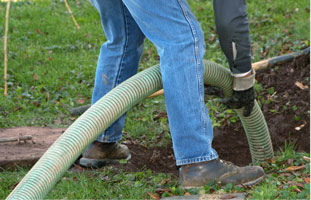When it comes to cooling industrial and commercial locations, it’s critical to achieve the right climate. Advanced cooling methods are widely used in a variety of industries, including manufacturing facilities and office spaces, to effectively remove heat generated by equipment, processes, and HVAC systems. Understanding how these systems work, their importance, and their role in promoting energy efficiency is critical to recognizing their worth in modern infrastructure.
The Role of Chillers in Cooling Systems
Chillers are vital for chilling buildings and industrial processes because they remove heat from liquids via vapor compression or absorption refrigeration cycles. A heat exchanger then passes this chilled liquid, typically water or a water-glycol mixture, to cool equipment, air, or other operations. There are two types of chillers: air-cooled and water-cooled. Air-cooled chillers dissipate heat via air, whereas water-cooled chillers absorb heat more efficiently by working in tandem with cooling towers. These systems conserve energy by cooling using water, which has a larger heat capacity than air and is therefore excellent for large-scale cooling applications.
How Cooling Towers Enhance Efficiency
Cooling towers work with chillers to provide an effective method of heat rejection. Once the chiller pulls heat from the process, the hot water is sent to the cooling tower, where it is exposed to airflow and allowed to cool before returning to the system. The tower’s design guarantees that the cooling process maximizes efficiency while reducing energy consumption, making it an essential component in large industrial and commercial buildings where energy conservation is a top priority. One of the most significant advantages of a chiller and cooling tower system is its capacity to handle large heat loads while using minimal energy.
Energy Efficiency and Environmental Considerations
Energy efficiency is a primary goal in modern cooling technologies, and water-cooled systems are specifically engineered to save energy. These technologies allow facilities to save much more energy than air-cooled alternatives. This results in lower utility bills and a lower carbon footprint, making this system combination a more ecologically friendly option. In addition to energy savings, water-cooled systems require less mechanical cooling and can work more successfully in high-temperature environments. While air-cooled systems may struggle to maintain efficiency in hot climes, a chiller and cooling tower setup maintains peak performance, ensuring continuous service even during the warmest months of the year.
Maintenance and Longevity
A chiller and cooling tower system requires proper maintenance to ensure its longevity and efficiency. Regular cleaning, inspections, and repairs are essential to avoid problems like scaling, corrosion, and biological development, all of which can degrade system efficiency. Neglecting these maintenance duties can result in inefficiencies, increased energy consumption, and even system failures, which can be costly to repair or replace. Routine maintenance not only maintains the system running smoothly but also ensures that the initial investment in a chiller and cooling tower is worthwhile in the long term.
Optimizing Efficiency with Chiller and Cooling Tower Systems
The combination of chillers and cooling towers is a critical component of industrial and commercial cooling infrastructure. These systems provide energy-efficient and cost-effective cooling by combining the high heat transfer capacity of water-cooled chillers with evaporative cooling from towers. Regular maintenance and system optimization are critical to ensuring consistent and reliable performance, allowing these systems to function at top efficiency for many years.



